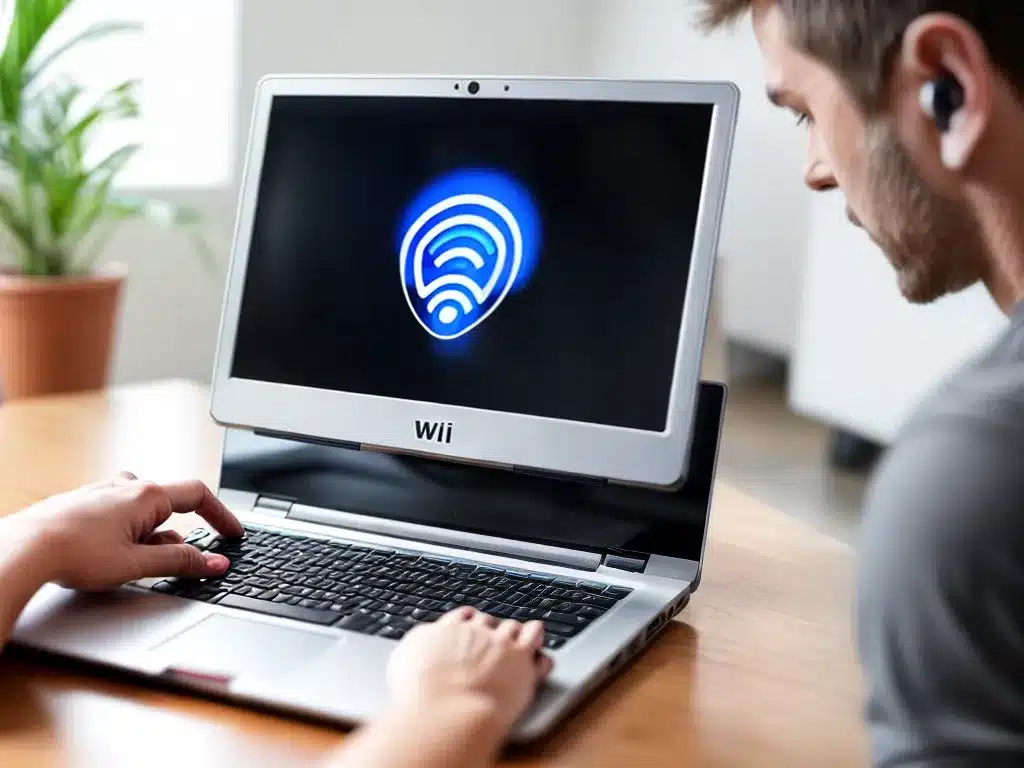
Having issues with your Wi-Fi connection can be incredibly frustrating. But don’t worry – in most cases, Wi-Fi problems are fixable with some simple troubleshooting. Here’s my guide to diagnosing and resolving the most common Wi-Fi connectivity problems.
Check Your Router Connection
The first thing to check is whether your router itself is working properly. Here are a few things I do:
-
Make sure the router is plugged into a power source and turned on. Look for blinking lights on the front that indicate it’s getting power.
-
Ensure the cables connecting your router to your modem are securely plugged in at both ends. Try unplugging and reconnecting them.
-
If you have a separate modem and router, reboot both of them by unplugging them from power for 30 seconds and plugging them back in.
-
Check for any loose hardware connections on the router or modem. Tighten up any ethernet cables or coaxial cables that may have come loose.
-
Reset your router to factory default settings in case the settings have become corrupted. Just locate the reset button on the back and hold it down for 10-15 seconds while powered on.
Getting your router hardware working properly again is often the solution to Wi-Fi woes.
Update Your Router Firmware
Outdated router firmware can also cause Wi-Fi connectivity problems. I make it a habit to check my router firmware version about once a month and update if needed.
Here’s how I check for router firmware updates:
-
Log into your router admin interface by typing the IP address into a browser (usually 192.168.1.1).
-
Look for a menu option like “Firmware Update” or “Administration”.
-
Note your current firmware version and check the router manufacturer website for a newer version.
-
Follow instructions to download and install the latest firmware. This improves performance and fixes bugs.
Keeping your router firmware up-to-date prevents issues down the road.
Switch Wi-Fi Bands
Dual-band routers transmit Wi-Fi on two frequency bands – 2.4GHz and 5GHz. Switching between these two bands can sometimes resolve connectivity issues.
Reasons to switch Wi-Fi bands:
- Too much interference on the 2.4GHz band from other devices
- Problems connecting devices that only use 5GHz Wi-Fi
- Speed/range issues if your devices support 5GHz
Here’s how I switch between 2.4GHz and 5GHz bands:
- Access router admin interface and locate the Radio or Wireless section
- Enable or disable the 2.4GHz or 5GHz bands as needed
- Connect devices to the active band that supports your needed speed
Toggling between the two Wi-Fi bands is a quick troubleshooting step to attempt.
Check Wi-Fi Channel Congestion
If neighboring Wi-Fi networks are all using the same channel, it causes interference and connectivity problems. I use Wi-Fi analyzer apps to detect channel congestion.
Here is how I optimize my Wi-Fi channel to reduce congestion:
- Scan for nearby networks using an app like Wi-Fi Analyzer on my phone
- Note which channels have the most and least congestion
- Log into my router admin interface and navigate to Wireless Settings
- Select the 5GHz and 2.4GHz channel with the least congestion
- Test my Wi-Fi speed after the change to make sure it helped
Optimizing your channel usage minimizes interference issues with neighboring routers.
Adjust Your Router Location
Wi-Fi signal strength drops off with distance from your router. Moving the router closer to your device or into a more central location can significantly improve connectivity.
Tips for optimal router placement:
- Elevate your router if possible to avoid physical obstructions
- Avoid cramming your router in a corner or enclosed space
- Place within line-of-sight of the devices experiencing issues
- Position away from other electronics that could cause interference
- Try not to put your router near a thick concrete wall if possible
Experiment with different router locations to find the wifi sweet spot in your home or office.
Check for Wireless Interference
Other devices in your home operating on the 2.4GHz frequency can potentially interfere with Wi-Fi signals. Here are some common sources of wireless interference I check for:
- Bluetooth devices like headphones, speakers, smartwatches
- Baby monitors and older cordless phones
- Microwave ovens
- Wireless cameras and security systems
- USB 3.0 devices like hard drives and printers
Isolating and moving potential sources of interference can clear up Wi-Fi connectivity problems quickly.
Update Network Adapter Drivers
Outdated or corrupt network adapter drivers on your computer can also disrupt normal Wi-Fi functionality.
Here is my process for keeping my network adapter drivers updated in Windows:
- Open Device Manager > Expand ‘Network adapters’ category
- Right-click your Wi-Fi adapter and select Update driver
- Click Search automatically for updated driver software
- Restart your computer after the update completes
Updating my network adapter drivers periodically helps optimize Wi-Fi connectivity.
Forget and Reconnect to Your Network
As a last resort, forgetting your Wi-Fi network connection and re-connecting from scratch may resolve stubborn connectivity issues:
- Open your Wi-Fi settings and select the problematic network
- Select “Forget” to delete the existing connection information
- Reboot your device and search for available networks
- Reconnect to your Wi-Fi by re-entering the password
This resets your Wi-Fi connection which often fixes speed and connectivity problems.
By following this Wi-Fi troubleshooting guide, you should be able to isolate and resolve most common Wi-Fi problems. Don’t hesitate to contact your router manufacturer or internet service provider if issues persist after trying these fixes. Consistent access to fast, reliable Wi-Fi is well worth the effort to diagnose and eliminate any connectivity gremlins.












